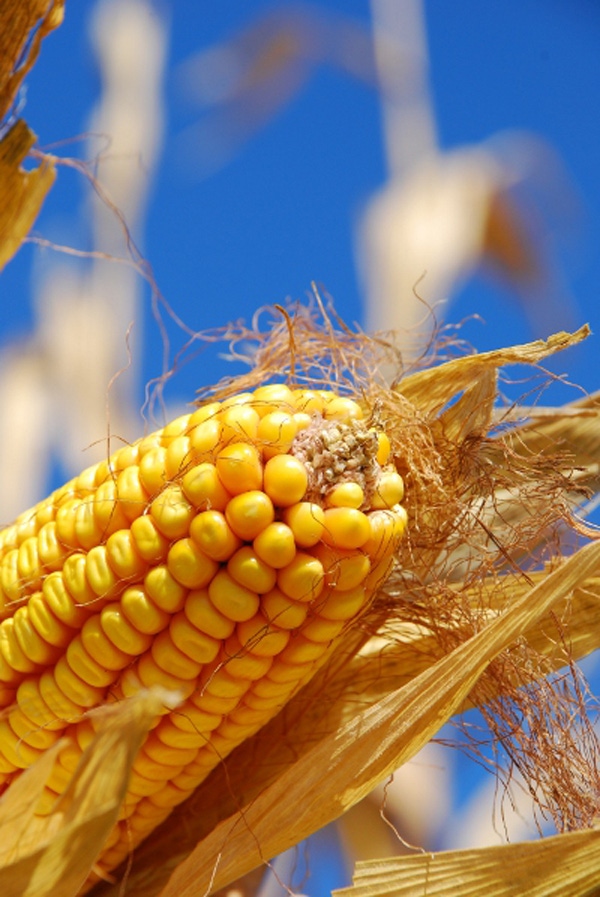September 15, 2015

December 2015 corn futures reached a low of $3.575 following the release of the surprisingly large production forecast on August 12. Prices, however, found some support from the USDA Crop Production and WASDE reports released on Sept. 11. December futures had recovered to near $3.92 in early trading on Sept. 14.
The information in the Sept. 11 USDA reports points to slightly smaller supplies for the 2015-16 marketing year and prospects for smaller year ending inventories than forecast in August. The prospects for smaller supplies come from a combination of smaller carryover supplies of old crop corn and a smaller production forecast. Supplies of old crop corn are expected to total 1.732 billion bushels, 40 million bushels less than projected last month. The reduction reflects increases in the estimates of domestic processing uses and exports of corn during the marketing year just ended. The 2015 corn crop is now forecast at 13.585 billion bushels, 101 million bushels smaller than the August forecast. The projection of feed and residual use of corn during the current marketing year was reduced by 25 million bushels from the August forecast, reflecting the expected impact of the smaller production forecast. The projection of the amount of corn to be used to produce sweeteners was increased by five million bushels. Stocks of corn at the end of the marketing year are projected at 1.592 billion bushels, 121 million less than projected last month and 140 million bushels less than stocks at the start of the year. The projection represents 11.6 percent of projected consumption, compared to the stocks-to-use ratio of 12.6 percent for the year just ended.
The price of corn will be influenced by a number of factors over the next two months, but upcoming forecasts of marketing year supplies will be one of the more important factors. The estimate of year-ending stocks of old crop corn will be available with the release of the USDA's Grain Stocks report on Sept. 30. Consumption of old-crop corn during the year just ended is mostly known, except for feed and residual use. Feed and residual use during the final quarter of the year will be revealed by the estimate of Sept. 1 stocks of old-crop corn. That use is difficult to anticipate because use during any particular quarter varies considerably from year to year and is not highly correlated to animal numbers. Fourth quarter feed and residual use may also reflect unknown errors in the estimate of the previous year's production. For feed and residual use during the 2014-15 marketing year to equal the USDA forecast of 5.3 billion bushels, resulting in year ending stocks of 1.732 billion bushels, fourth quarter use needs to total 516 million bushels. That is nearly 25 percent more than use during the fourth quarter last year and the largest fourth quarter use in six years. Use at that level appears attainable since third quarter use was up 29 percent from that of last year. Because of the uncertainty surrounding quarterly feed and residual use and possible production estimate errors, the USDA's estimate of Sept. 1 corn stocks can sometimes provide a surprise.
The forecast of the size of the 2015 corn crop will also likely change over the next two months. Estimates of planted and harvested acreage sometimes change in the USDA's October Crop Production report as administrative data, primarily from the Farm Service Agency (FSA), are incorporated into the acreage estimates. Sometimes potential changes can be anticipated based on FSA monthly reports of planted acreage that has been reported by those producers participating in federal farm programs. The initial report this year was released on Aug. 17, with an updated report scheduled for Sept. 16. For the years from 2007 through 2013, the final FSA report of corn planted acreage was 2.4 to 3.2 million acres less than the final estimate of planted acreage from the USDA's National Agricultural Statistics Service (NASS). FSA acreage totals ranged from 96.7 to 97.5 percent of the NASS totals. Last year, however, the final FSA acreage total was 4.1 million acres less than the NASS final estimate, with the FSA total representing only 95.5 percent of the NASS total.
Estimates of the average 2015 national corn yield will likely change over the next two months as well, if history is any guide. The September yield forecast of 167.5 bushels was 1.3 bushels less than the August forecast and expectations revealed in newswire surveys suggest that the trade expects the October forecast to be even smaller. Some previous analysis (1970-2005) of changes in monthly corn yield forecasts did find positive correlation between the change in yield forecasts in September and the changes in October and between the changes in October and the changes in November. The recent track record, however, is very mixed. In the 20 years from 1995 through 2014, the September yield forecast was lower than the August forecast in 10 years. In those 10 years, the October forecast was lower than the September forecast in only four years. The largest decline in October in those four years came in 2010, when the yield forecast declined by 6.7 bushels.
With corn supplies for the 2015-16 marketing year less burdensome than projected earlier, there will likely be opportunities for price rallies over the next several months. As with recent rallies, the magnitude of the rallies may be limited and the duration may be brief. Still, producers in many parts of the Corn Belt will likely see opportunities to forward price stored corn for late winter/early spring delivery above $4.00.
You May Also Like




